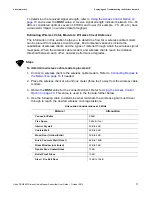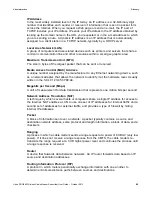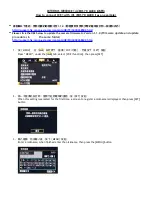
Ubee Interactive
Glossary
Ubee DDW365 Wireless Cable Modem Subscriber User Guide • October 2013
82
IP Address
In the most widely installed level of the IP today, an IP address is a 32-bit binary digit
number that identifies each sender or receiver of information that is sent in packet form
across the Internet. When you request a Web page or send an e-mail, the IP part of
TCP/IP includes your IP address. IP sends your IP address to the IP address obtained by
looking up the domain name in the URL you requested or in the e-mail address to which
you are sending a note. A dynamic IP address is an IP address that is automatically
assigned to a client station in a TCP/IP network, typically by a DHCP server.
Local Area Network (LAN)
A group of computers and associated devices such as printers and servers that share a
common communication line and other resources within a small geographic area.
Maximum Transmission Unit (MTU)
The size in bytes of the largest packet that can be sent or received.
Media Access Control (MAC) Address
A unique number assigned by the manufacturer to any Ethernet networking device, such
as a network adapter, that allows the network to identify it at the hardware level. Usually
written in the form 01:23:45:67:89:ab.
Megabits per Second (Mbps)
A unit of measurement for data transmission that represents one million bits per second.
Network Address Translation (NAT)
A technique by which several hosts or computers share a single IP address for access to
the Internet. NAT enables a LAN to use one set of IP addresses for internal traffic and a
second set of addresses for external traffic, and provides a type of firewall by hiding
internal IP addresses.
Packet
A block of information sent over a network. A packet typically contains a source and
destination network address, some protocol and length information, a block of data, and a
checksum.
Ranging
A process in which a cable modem sends a range request at a power of 8 dBmV (very low
power). If it does not receive a range response from the CMTS, the cable modem re-
transmits the range request at a 3 dB higher power level and continues the process until
a range response is received.
Router
A device that forwards data between networks. An IP router forwards data based on IP
source and destination addresses.
Routing Information Protocol (RIP)
A protocol in which routers periodically exchange information with one another to
determine minimum-distance paths between sources and destinations.



































